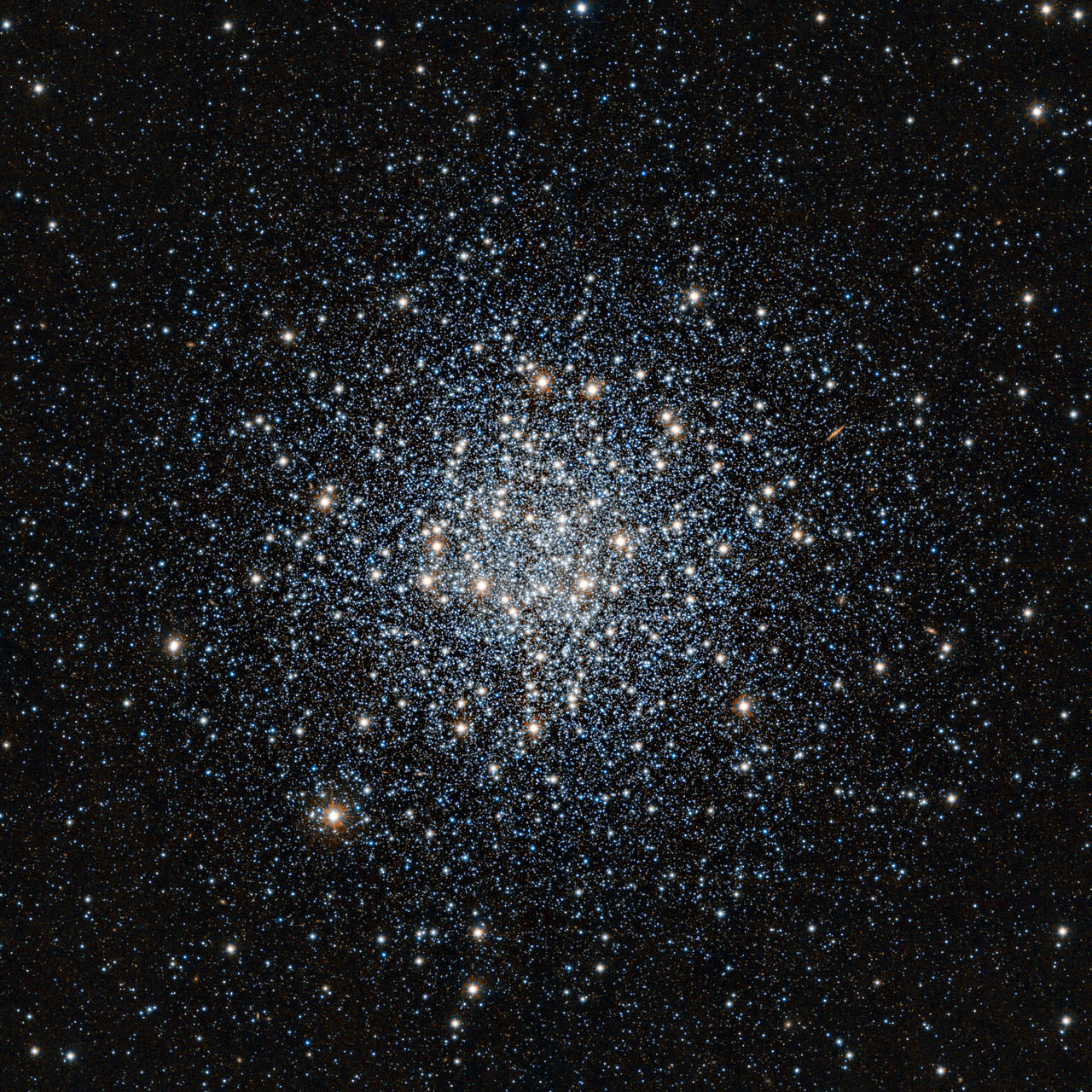[/caption]
Globular clusters are my absolute favorite telescope targets. Okay, Saturn, and then globular clusters. And that’s why I’ve absolutely fallen in love with this amazing picture from the European Southern Observatory of the globular cluster M55, located in the constellation Sagittarius. In fact, it’s my new desktop wallpaper (it should be yours too, click here and download the screensize that fits your monitor)
Globular clusters contain vast numbers of stars clumped together in a tight area. In the case of M55, there are about 100,000 stars grouped up within a sphere only 100 light-years across. Astronomers know that globular clusters are old, almost as old as the Universe itself. In fact, for the longest time, astronomers calculated the age of globular clusters to be older than the estimated age of the Universe. Of course, there was an incorrect measurement there, and astronomers eventually aligned the age of globular clusters and the Universe.
M55 is thought to have formed 12.3 billion years ago, when the Universe was less than 3 billion years old. The most ancient stars in the cluster burned out a long time ago, detonating as supernovae. We’re now left with the cooler, lower mass stars, which slowly wink out one-by-one becoming white dwarfs as they proceed through the full stellar life cycle. Our own Sun is only halfway through its own lifespan, before it runs out of hydrogen fuel and becomes a white dwarf.
There are at least 160 globular clusters scattered across the Milky Way, grouped up more towards our galaxy’s core. We can only see some of the clusters because the bright core of the Milky Way obscures our view to objects on the other side. But other galaxies, with their own globular clusters show us what our own galaxy probably looks like from afar.
M55 is part of the Messier catalog; a collection of objects that looked comet-like to the eyes of Charles Messier, a French astronomer working in the 18th century. Messier recorded a list of more than 100 objects which could be confused as comets: galaxies, clusters, and nebulae.
Want to see M55 on your own? You’ll need at least a pair of 50 mm binoculars or a small telescope, some nice dark skies, and a clear view to the constellation Sagittarius. Sagittarius looks exactly like a teapot in the sky, hovering above the southern horizon in summer. The further south you go, the higher Sagittarius will be in the sky.
But you’ll never see a view or take an image as detailed as this photo. That’s because it was captured with the ESO’s 4.1-metre (13.4 foot) Visible and Infrared Survey Telescope for Astronomy (VISTA) at ESO’s Paranal Observatory in northern Chile.
Original Source: ESO News Release

